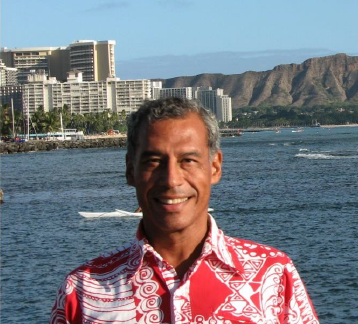SusTech Talks Nov. 2023 – Energy Equity or Energy Divide when Fighting Climate Change
SusTech is hosting talks on Sustainability topics leading up to the 2024 conference in April.
“Energy Equity or Energy Divide when Fighting Climate Change:
IEEE Brings Energy Equity & Safety to Native Hawaiian Communities on Molokai (Homesteaders and Section-8 Low Income Renters)”
with John Borland, J.O.B Technologies. Aiea, HI
Date: Tuesday 28-November-23
Time: 06:00 PM to 07:00 PM (PDT) [via Zoom]
Register: https://events.vtools.ieee.org/event/register/383403
Abstract:
The atmospheric CO2 level reached 424PPM this past May. To Fight Climate Change will require everyone in the United States to do their part with the average American carbon emissions at 16.6Tons/head. The best way is to start at home and strive to achieve 100% clean renewable energy. Using Hawaii as an example, the State and Federal policies continue the “Energy Divide” by benefiting the affluent and leaving 81% of the population unable to benefit/participate and lower their Energy Burden. To reach the state goals of 100% renewables by 2045, Low-income section-8 renters and households without access to rooftop solar living in apartments and high-rise condos must also participate in Fighting Climate Change. residents on Molokai experiences the highest Energy Burden in Hawaii and are always neglected as reported in the 9/22/21 Honolulu Civil Beat article. This inspired Borland to write his IEEE-PVSC 2022 paper, an energy cost savings analysis for residents on Molokai and Oahu to reduce Energy Burden by up to 93%. About 129 Homesteads on Molokai do not have access to electricity from Hawaiian Electric. They live off-grid using propane gas for heating, gasoline to power electric generators and purchase ice for ice box and ice chest resulting in very high carbon emissions.
After submitting two proposals unsuccessfully to the DOE (department of energy) in 2022, Borland submitted his Molokai proposal to IEEE Smart Village (ISV) since they have sponsored off-grid solar programs in third world countries, he thought why not at home in the US. After 10 months and with special funds from IEEE EDS, the Energy Equity Phase-1 pilot was funded on May 9th to replace the use of fossil fuel (propane and gasoline) with Solar + Battery clean energy and Energy Sharing between the multi-generational homes. Two Native Hawaiian Homesteads were selected, the 1st system was commissioned on Sep 14th and the 2nd on Oct 5th. ISV funds were also used to purchase energy efficient household appliances to improve their Quality of Life. Payback for the 1st Homestead is 1.5years and <1 year for the 2nd Homestead.
To bring Energy Equity and Safety to the remaining on-grid Native Hawaiian low-income Section-8 renters on Molokai, Borland submitted a 2nd proposal to IEEE/HTB (Humanitarian Technology Board) to fund a Plug&Play Battery + non-rooftop solar system. This was funded on Aug 21st and IEEE Region 6 provided additional funds. The 1st low-income renter is 10 months behind on utility bills ($250/month) and received the system in Aug with a residential wind generator for supplemental power to charge the battery at night and on cloudy/rainy windy days. His Sep Hawaiian Electric utility bill dropped to $123, an Energy Burden reduction of 51% and payback of 2.2 years. The 2nd low-income renter is a most vulnerable household requiring power 24×7 for a home Dialysis Machine. The ground mount solar array is currently under construction.
In summary, the IEEE Humanitarian projects demonstrated Energy Equity and Safety to Native Hawaiian Communities on Molokai. The results show energy burden reduction between 51-91%. When scaled for the remaining 75% households on Molokai without solar, we will reduce the need to generate cash inflow of ~$2.3M/year from tourism and government subsidies creating a new industry from Passive Renewable Energy. They plan to invest their savings in their agriculture business and/or new business that promotes renewable energy on Molokai.
Biography:
John Ogawa Borland was raised in Honolulu, Hawaii and received his BS and MS degrees in Material Science and Engineering from MIT (Massachusetts Institute of Technology). BS thesis on InP Liquid Phase Epitaxy at Hughes Malibu Research Labs and MS thesis on InGaAsP Molecular Beam Epitaxy at Nippon Telegraph and Telephone Musashino Labs in Tokyo, Japan.
He has published 169 technical and invited papers in the areas of advanced semiconductor device manufacturing, high efficiency c-Si solar cells and optimizing residential Solar + Storage systems. He has also been awarded 6 US patents and 2 Japanese patents. His career in the semiconductor industry covers 18 CMOS technology nodes from 1.25um to 3nm. For the solar industry he developed high efficiency c-Si solar cells using ion implantation and laser melt annealing for selective emitter technology. In June 2020, he published a book chapter on residential Island Nano-Grid using 100% Energy from the Sun.
Currently he is focused on residential Solar + Storage to Fight Climate Change by bringing Energy Equity to the underserved communities. This involves Solar and home energy usage audits to reduce energy burden and maximize energy cost savings. The IEEE Molokai humanitarian projects are pilot demonstrations of Energy Equity for the Native Hawaiian Communities on Molokai.
He is a Life Senior member of IEEE, the IEEE Region 6 Central Area chair, past chair of the IEEE Hawaii section, IEEE Electron Device Society/Solid-State Circuits Society Hawaii joint chapter chair, IEEE Power and Energy Society Hawaii chapter chair and PES Humanitarian Activities Committee Global Ambassador. He is also a member of the Electrochemical Society and Materials Research Society.


